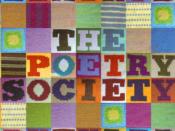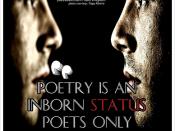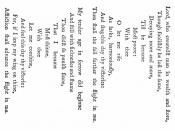Analysis of "Piano"
The speaker in "Piano" by D. H. Lawrence is proud to be a full grown man, yet he loves remembering his happy childhood; his nostalgic attitude causes him to feel guilty as if he had betrayed his present state of being. Through effective imagery, Lawrence is able (to describe an image) to help the reader understand the speaker's nostalgic attitude. The diction and tone used in this poem reveal the speaker's struggle as his feelings mix between his desire to be a man and his desire to return to his childhood. The syntax and structure of the poem keep the reader in tune with the flow of the poem. In this poem a man struggles to remain a man while fighting off his memories of the past, which he feels would be uncharacteristic of his present maturity.
The imagery in this poem helps to describe a picture in the reader's mind so that the reader can sympathize with the speaker during his journeys into the past.
In the first stanza, in the first line, the first image is of a woman. In the fourth line the reader learns that this woman is the speaker's mother. The third line shows an image of a "child sitting under the piano . . . pressing the small, poised feet of a mother who smiles." This image gives the reader an image, perhaps of a parlor room, of a child about three or four years of age enjoying the music produced by his mother. The love of the mother shines through her smile as she reciprocates to the child's gentle touch. Later, in the second stanza, the contrasting image of a cold, snowy night in the winter and the cozy parlor causes the "hymns" to seem doubly warm. This represents the...


